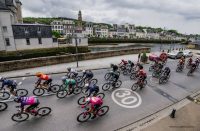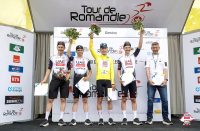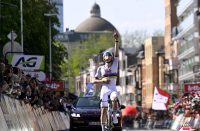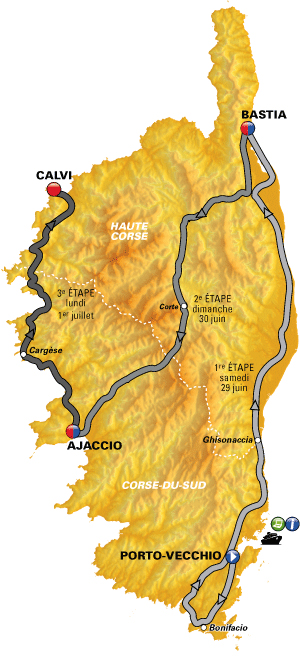
First time
This will be a historic first edition of the Tour de France in Corsica.
Together with the Tour de France, Corsica is planning to make the “Grand Depart” unforgettable. Corsica is known as the Island of Beauty. It is planning to showcase its terrain and roads that are meant for bike race attacks as well as it’s magnificent scenery, beaches and mountains.
Christian PRUDHOMME
Director of Tour de France
“For many, the Tour de Corse brings to mind the famous «Ten Thousand Turns Rally», the historical and spectacular stage of the World Rally Championship.
But those who are keen on cycling know that a race with the same name, now reserved for amateurs, has been a popular event with champions at the beginning of the season for a long time. Just before fighting it out during Paris-Nice, they were already sizing each other up on the hills of the Island of Beauty. The list of winners of the race, created in 1920, features two riders who won the Tour de France in particular, Stephen Roche and Bernard Hinault. And Gilbert Duclos Lassalle, who was victorious in 1980, believes with hindsight that “Corsica was the turning point in my career”.
Before the Tour de France, another prestigious stage race included a stay in Corsica on its route. The stopovers carried out between the island and the mainland during Paris-Nice (1963-64-66) allowed Raymond Poulidor to notch up victories in Porto-Vecchio and L’Île-Rousse. The cycling elite has been present on Corsica’s roads again since the Critérium International in 2010. It was in the ascent to the Col de L’Ospedale that Pierrick Fédrigo and Fränk Schleck built their successes during the three stages of the race.”
Historical
2013: the event is historical. This year the Tour de France will celebrate the hundredth edition of the biggest cycling event in the world.
The Island of Beauty is the only region of France which has never been visited by the race. This year it will welcome the cyclists, the Tour’s followers, the public and all the logistics which will ensure the success of this event. Corsicans are preparing to measure up to the immense interest associated with the Tour.
The Island of Beauty has thousands of attractions. The richness of its natural heritage boasts landscapes with a wide variety of fauna and flora. Pine forests, lakes, scrubland and vineyards stretch out between the sea and the mountains. Cristal-clear waters run alongside fine sandy beaches, unspoiled coves and steep granite cliffs, and the coastline which covers more than 1,000 kilometres.
Corsica is a lively island. The cities which will see the peloton of the 2013 Tour de France each have specific features. Porto-Vecchio, the City of Salt, combines economic activity and beautiful scenery typical of the south of the island. Bastia, further north, epitomizes Corsica’s urban, classical and Baroque features and is a cutting edge city whose natives speak their mind. Ajaccio, the Imperial City, boasts thousands of attractions: a dynamic city center and exceptional natural sites, such as La Parata which can be discovered by taking the Îles Sanguinaires road. Calvi, Semper fidelis and the capital of Balagna, wins over visitors with the appeal of its citadel and the activity of its port, making it one of the most popular cities for tourists.
Corsica’s richness is also due to its expertise in combining ancient practices such as village fairs, wine-producing and gastronomy with modern activities, characterized by the development of services, infrastructures and the conservation of the region.
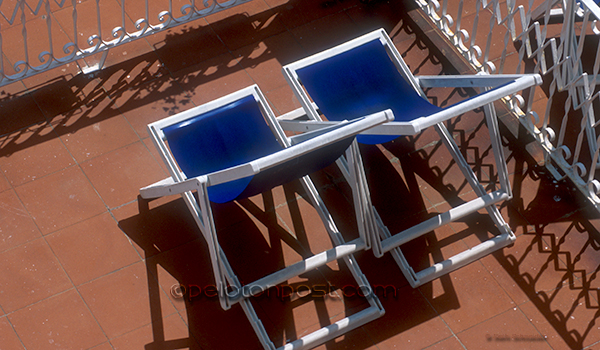
Situated about 170 kilometres south east of the French mainland, Corsica is an island in the Mediterranean Sea with a surface area of 8, 680 square kilometres and has almost 300, 000 inhabitants.
Ajaccio has 65, 000 inhabitants. Bastia 44, 000 inhabitants, Calvi 5, 500 and Porto-Vecchio 11, 500 inhabitants.
Dates to remember
Wednesday 26th June: Opening of the race headquarters and the press centre which will be set up on a ship ferry. The ferry will be moored in the port of Porto-Vecchio and will follow the progress of the race every day
Thursday 27th June: Presentation of the teams of the 2013 Tour de France in Porto-Vecchio
Saturday 29th June: First stage, Porto-Vecchio > Bastia
Sunday 30th June: Second stage, Bastia > Ajaccio
Monday 1st July: Third stage, Ajaccio > Calvi
Access
By plane: Daily links from mainland France to the airports of Ajaccio, Bastia, Calvi and Figari
By boat: From Marseille, Nice or Toulon to Ajaccio, Bastia, Calvi, L’Île-Rousse, Porto-Vecchio or Propriano
Journey time: From 3 hours with the HSC (high speed craft) to 10 hours
Grand Départ in Corsica for the 100th
Stage 1 – Saturday 29th June
Porto-Vecchio / Bastia 200km
The start of the 100th edition of the Tour de France will take place on the port of Porto-Vecchio. The peloton will head to the south of the island to the outskirts of Bonifacio and after passing through Porto-Vecchio again. It will go north on the east coast road which leads to Bastia. This stage will be on flat ground without any major difficulties. Before the final stretch, riders may have time to glance at the Roman remains of Mariana. The finish will be out on the lagoon road, along the Lake Biguglia Nature Reserve.
Stage 2 – Sunday 30th June
Bastia / Ajaccio 155km
The magnificent Place Saint-Nicolas, one of the biggest squares in Europe, will be the setting for the start of the 2nd stage. The riders will then pass in front of Furiani Stadium, the Mecca of Corsican football, and head south again. Things get more complicated after Corte, on the steep roads in the center of the island. The Cols de Bellagranajo (723 m), de la Serra (807 m) and de Vizzavona (1,163 m) climbs, and the ascent of the steep slope of Monte Salario, 10k from the finish. It will be judged on the headland of La Parata, with the majestic scenery of the Îles Sanguinaires as a backdrop.
Stage 3 – Monday 1st July
Ajaccio / Calvi 145km
The third act of the “Grand Départ” will unfold on the Place Moit, beside the beach and the Mediterranean Sea.
The peloton will race along the west coast of the island and head north on winding roads which cross the magnificent creeks of Piana, a listed UNESCO World Heritage site. Hilly landscapes will be featured with the Col de San Bastiano (415 m) at kilometre 15, and then the Cols de Lava (498 m), de Palmarella (374 m) and de Marsolino (443 m). The finish will be on the road from Calenzana to Calvi.

